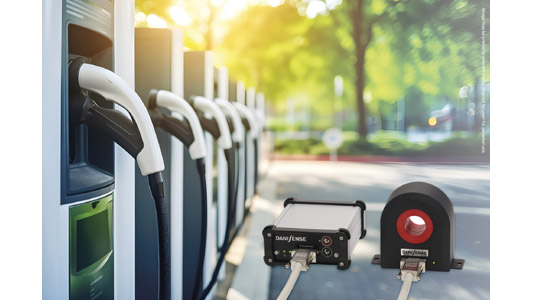Taastrup, Denmark, December 2024…A current research project at Graz University of Technology analyses periodic verification and safety of direct current electric vehicle charging stations. As part of the ProSafE² project (Protection, Safety and Efficiency of Electric Vehicle Charging Stations) the basis for periodic verification of direct current electric vehicle charging stations (EVCS) is being researched and a test procedure for the recurring testing of DC charging stations has been developed over the past two and a half years in order to ensure their safety over the entire operating period. Findings from the project are also being incorporated into the update of the OVE guideline R 30.
For this project, a DS600ID current transducer from Danisense, the leader in high-accuracy current sense transducers for demanding applications, has been integrated into the DC circuit of the ‘mobile charging station testing device demonstrator,’ which is connected to the DC charging station. The current transducer precisely measures the currents flowing between the charging station and the demonstrator. This is very important as the project also focuses on the energy efficiency of the EV charger. “For such an energy efficiency measurement you need to have highly accurate current measurements to reduce the impact of the error in the calculation,” remarks Loic Moreau, EMEA Sales & Marketing Director at Danisense.
“A crucial component for the ‘mobile charging station testing device demonstrator’ we developed to connect to the DC charging station for analysis, is the DS600ID current transducer from Danisense, which was recommended to us by a colleague from the Austrian Federal Office of Metrology and Surveying,” explains Daniel Herbst, Project Assistant at the Institute of Electrical Power Systems at TU Graz. “Given the need to measure high currents with utmost reliability and accuracy in our analysis, it was essential to select a precise and high-quality measuring device,” Herbst continues. “The DS600ID component, which was sponsored for our project by Danisense, perfectly meets our requirements, and we are very satisfied with the highly accurate results it provides,” Herbst concludes.
For further information about Danisense’s DS600ID please click here.













